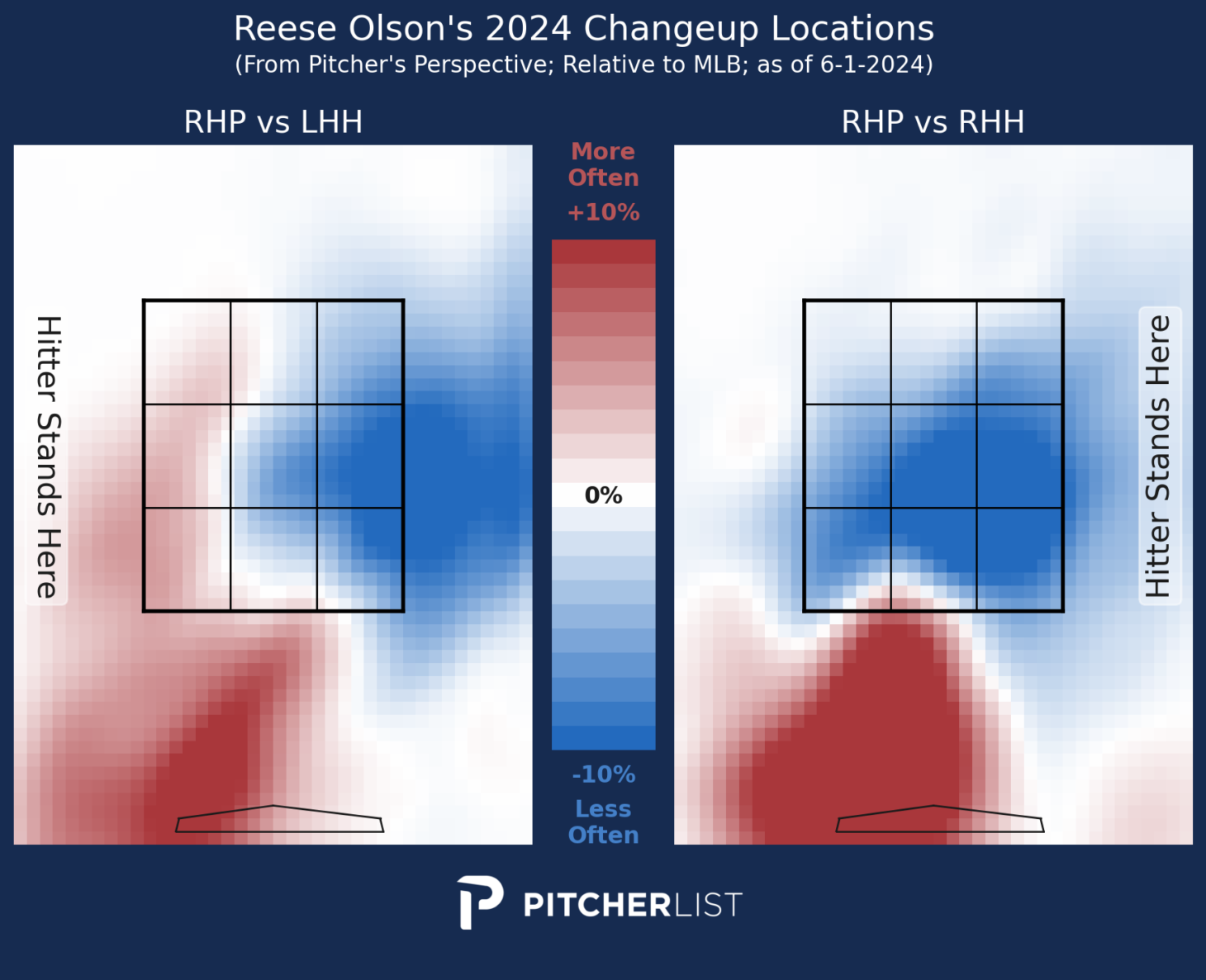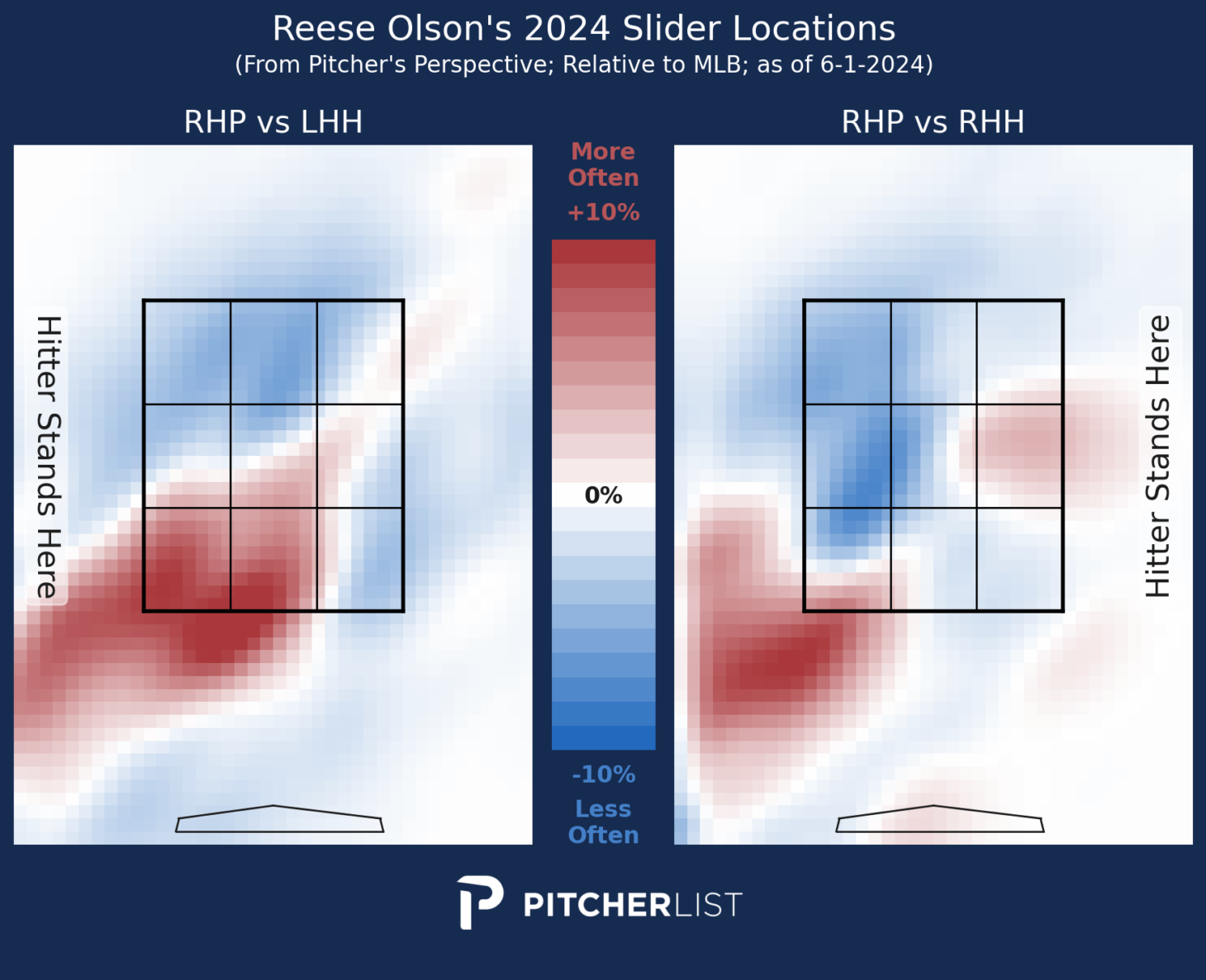Reese Olson, the 24-year-old phenom starting pitcher for the Tigers, has had an electric start to his major league career. In 165.1 career innings thus far, split over 2023 and 2024, Olson has a 3.43 ERA and 3.71 FIP, making himself a staple in the Tigers rotation along the way.
A 13th-round draft pick by the Brewers in 2018, Olson later established himself as a solid prospect in the Tigers system, eventually joining the team in a mixed bullpen/starting rotation role in 2023.
Throughout the minors, scouts were worried about his command, especially of his fastball, which already wasn’t elite. A below-average BB% throughout the minors highlighted that, causing his FIP to be considerably inflated.
This problem erased itself once Olson reached the Majors. Not only did Olson introduce a sinker, which helped his four-seam play with more confidence in the zone, but Olson improved his BB% significantly, now sitting at a slightly above-average 7.9%.
Entering 2024, Olson earned a spot in the backend of a solid Tigers rotation, where he has excelled to the tune of a 2.48 ERA and 3.21 FIP.
Overview

Olson has a deep five-pitch arsenal, highlighted by his elite slider and changeup, the latter of which earned a 70-grade as a prospect. His slider especially generates tons of whiffs and called strikes, while his changeup also gets chases out of the zone and thus excellent results. Both pitches return loads of groundballs, which has allowed his season-wide GB% to be 58.0%, an elite mark.
Olson’s fastballs are a bit more of a concern; while his sinker grades out fairly well, his four-seam has a poor 23.7 CSW% and 34.3 HC% in 2024. It also has a minuscule .180 BABIP despite its hard contact and high groundball and line drive rates, suggesting there will be some regression as the season progresses.
While thrown only ~6% of the time, Olson’s curveball is also below average and gets hit hard. Still, it is thrown infrequently and out of the zone enough to avoid significant damage.
Overall, Olson is hit pretty hard, yet he still avoids enough barreled balls to prevent home runs from being a major threat.
How Does Luck Factor In?
A quick look at the numbers will tell you luck has been a huge factor in Olson’s success thus far; a 6.7 HR/FB% and 3.72 xFIP are red flags for regression. Still, I don’t believe it is as simple as that.
While his HardHit% is indeed up from 2023, the damage caused is significantly less due to the severe decrease in barrels allowed. As Barrels combine exit velocity and launch angle, this decrease is largely because Olson’s hard-hit balls are mostly on the ground. Even if Olson has gotten lucky on the results of these ground balls, which he probably has, the damage would likely be less severe than in the past.
Olson’s elite 0.44 HR/9 is overshadowed by his unsustainable 6.7 HR/FB%. When this regresses, assuming more runners reach base as well, Olson will see his ERA inflate in accordance with his expected numbers. However, Olson’s home run increase will likely be much less severe than most are expecting.
The exit velocity on fly balls allowed by Olson has decreased in 2024, down from a below-average 88.7 mph to an above-average 86.6 in 2024. This can be attributed to Olson’s changed approach this season, which contains fewer fastballs and more pitches out of the strike zone. Olson’s 40.4 Zone% is one of the lowest in the league, and yet his called strike and chase rates are both well above average.


Especially against righties, Olson hasn’t been afraid to throw either of his two elite secondaries out of the zone whenever needed. While this hasn’t translated to more strikeouts, it doesn’t have to.
While his xFIP might not like it, Olson has seen a decline in strikeouts, with his solid 24.4 K% in 2023 dropping to a slightly below-average 20.6.
The reason I don’t see a real problem with such a trend is due to his chase and whiff rates staying great, suggesting his stuff hasn’t declined. In addition, Olson has drastically improved his batted-ball tendencies, as mentioned earlier. His 42.1 GB% in 2023 wasn’t bad, but his 54.8 GB% in 2024 is elite.
Will it Sustain?
Even with this changed and effective approach, hitters adjust. Olson’s stuff isn’t excellent, as his average PLV of 4.97 is below average for starting pitchers. While his changeup and slider perform well out of the strike zone, Olson could use another threat in-zone to create soft contact.
His sinker has been a nice development and has even seen an uptick in stuff in 2024; it is one of his most frequently used pitches in the strike zone, and it frankly needs to be. Still, batters are hitting it hard, and it has some below-average expected results with a .294 xAVG and .338 xwOBA. Olson’s four-seamer has poor stuff and, despite good results so far, is due for some regression if he keeps throwing it as frequently as he has so far in 2024.
The good news is hitters have taken lots of called strikes already from Olson, meaning some adjustments have already been made by hitters to lay off his secondaries.
If Olson continues to prove he can adjust along with hitters as a game progresses, he can certainly continue to succeed, albeit maybe to a slightly lesser degree. Surprisingly, Olson’s command has been a huge contributor to this, contrary to what many scouts projected during his time in the minors.
As a young starter with a diverse pitch arsenal, Olson has proven capable of tackling big-league lineups and pitching deep into games. To keep his success, the best thing he can do is stay healthy and trust his stuff.
